How Policy and Innovation Drove an Electric Revolution
The global shift toward electric vehicles (EVs) is accelerating, but the pace differs vastly by country. Nowhere is this contrast more evident than in Norway, a nation that has emerged as the undisputed world leader in EV adoption. In this iNetic Traction article, we delve into why Norway’s EV uptake has been so remarkably successful and explore how it compares to the United Kingdom, the United States, and other European countries. The tone is technical and factual – much like an engineering magazine – aimed at industry experts and EV enthusiasts eager to understand the mechanics behind Norway’s electric revolution.
In 2024, battery-electric vehicles (BEVs) and plug-in hybrids accounted for 88.9% of new cars sold in Norway, up from 82% in 2023[1]. In some months, EV registrations even topped 95%, bringing Norway within reach of its ambitious goal (set in 2017) to have 100% of new car sales be zero-emission by 2025[1]. By comparison, only about 20% of new cars in the UK were electric in 2024, and the U.S. lagged further behind at roughly 8.9%[2]. On average, about one in five new cars across Europe is electric, underscoring just how far ahead Norway truly is[3]. This striking disparity prompts a key question: what has Norway done differently to lead the world in EV adoption? The answers lie in a combination of forward-thinking policies, generous incentives, robust infrastructure, and a consistent national commitment to electrification.
The chart compares electric vehicle adoption rates across major markets over the last decade. Norway (top line) shows a steep climb to nearly 100% of new car sales being electric by 2024, far surpassing the UK’s roughly 20% share and the single-digit percentages in the US[2]. The European Union average (EU, middle lines) has hovered around 20% in recent years[3] – impressive growth, yet still a far cry from Norway’s dominance. This visual highlights the stark contrast: Norway’s EV uptake curve is an outlier, illustrating how its sustained pro-EV strategy has propelled it years ahead of other automotive markets.
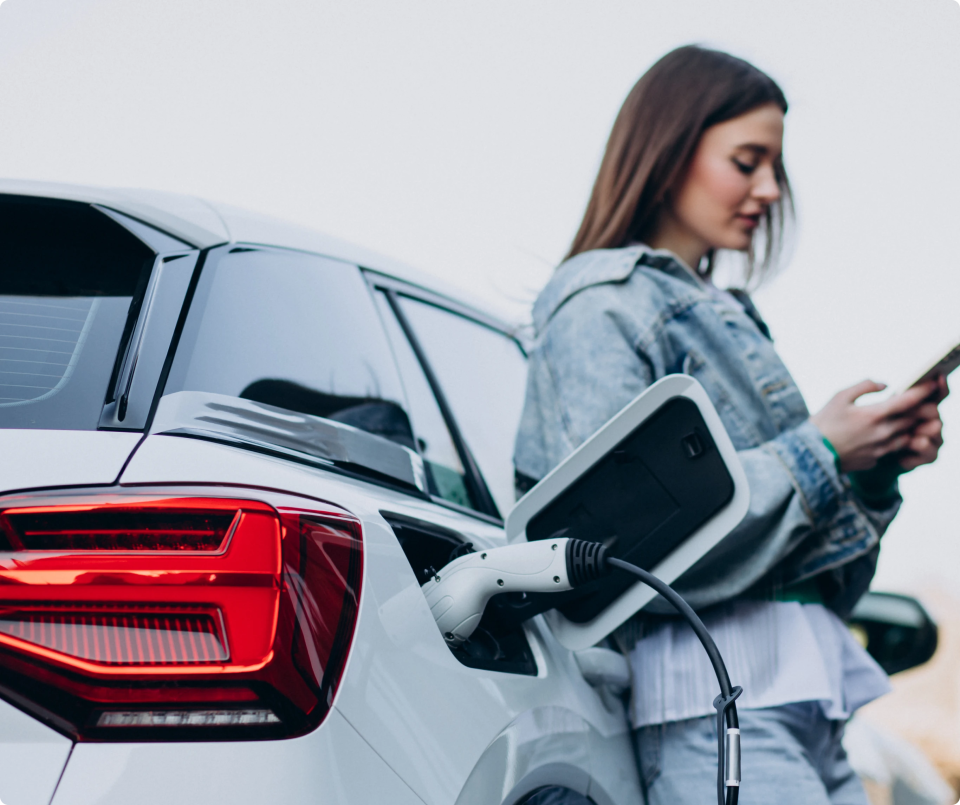
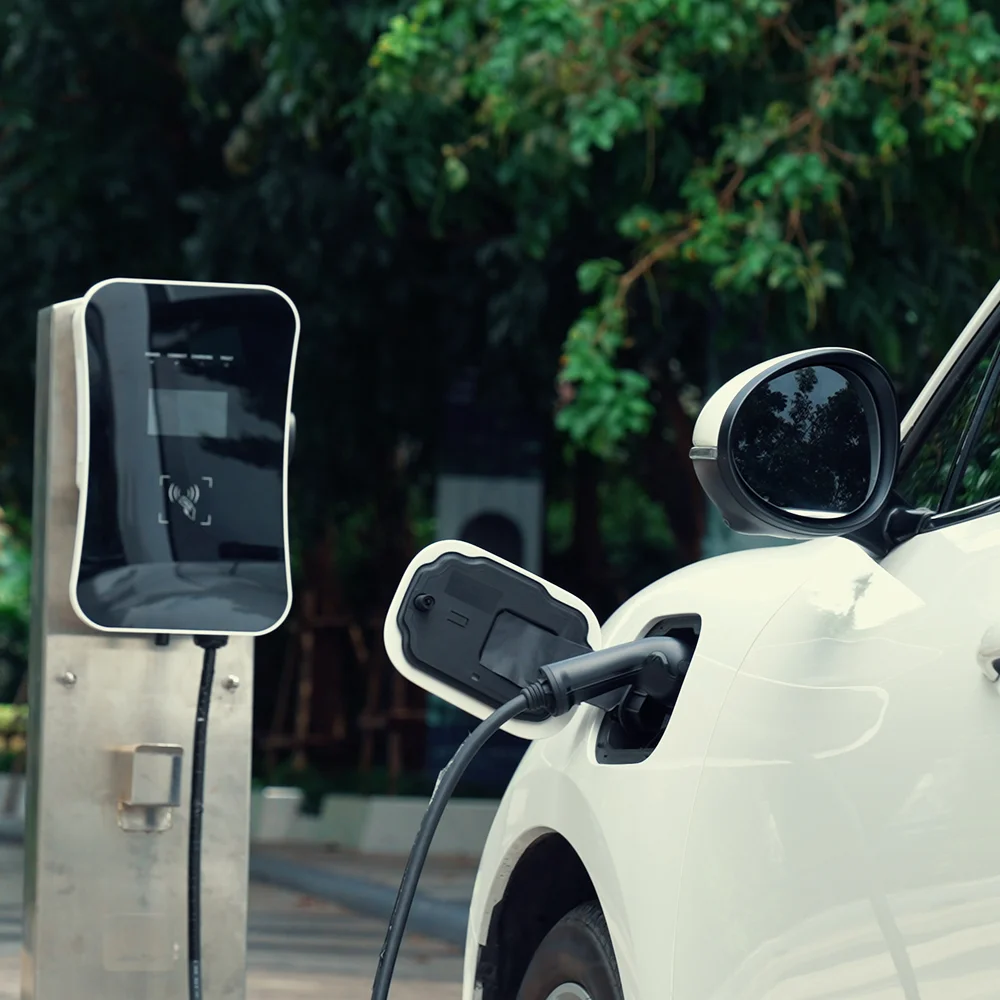
Norway’s Electric Vehicle Adoption in Context
Norway’s rapid ascent in EV adoption didn’t happen overnight – it is the result of decades of strategic effort. The country of about 5.5 million people is now often cited as “the world’s EV laboratory,” with electric models of all shapes and sizes populating its roads. Consider the on-road fleet: as of early 2025, nearly 29% of all cars on Norwegian roads are electric, surpassing the share of gasoline/petrol cars in the country[4]. This is a stunning milestone, given that as recently as 2012, EVs were a niche in Norway. It also means Norway has begun reducing dependence on fossil fuels in transport – in fact, Norwegian road fuel consumption fell by about 12% from 2021 to 2024 as EVs displaced petrol and diesel use[5].
Crucially, Norway achieved this in spite of challenges that skeptics often claim would hinder EVs. The country’s cold climate and long distances could have posed obstacles, yet Norwegians have embraced EVs enthusiastically, debunking the myth that electric cars “don’t work in cold countries”[6]. Norway’s experience shows that with the right support system, issues like winter range loss or sparse rural charging can be managed. In the sections below, we break down the key factors behind Norway’s EV success – from economic policy to infrastructure – and use them to draw comparisons with the UK, the US, and the rest of Europe.
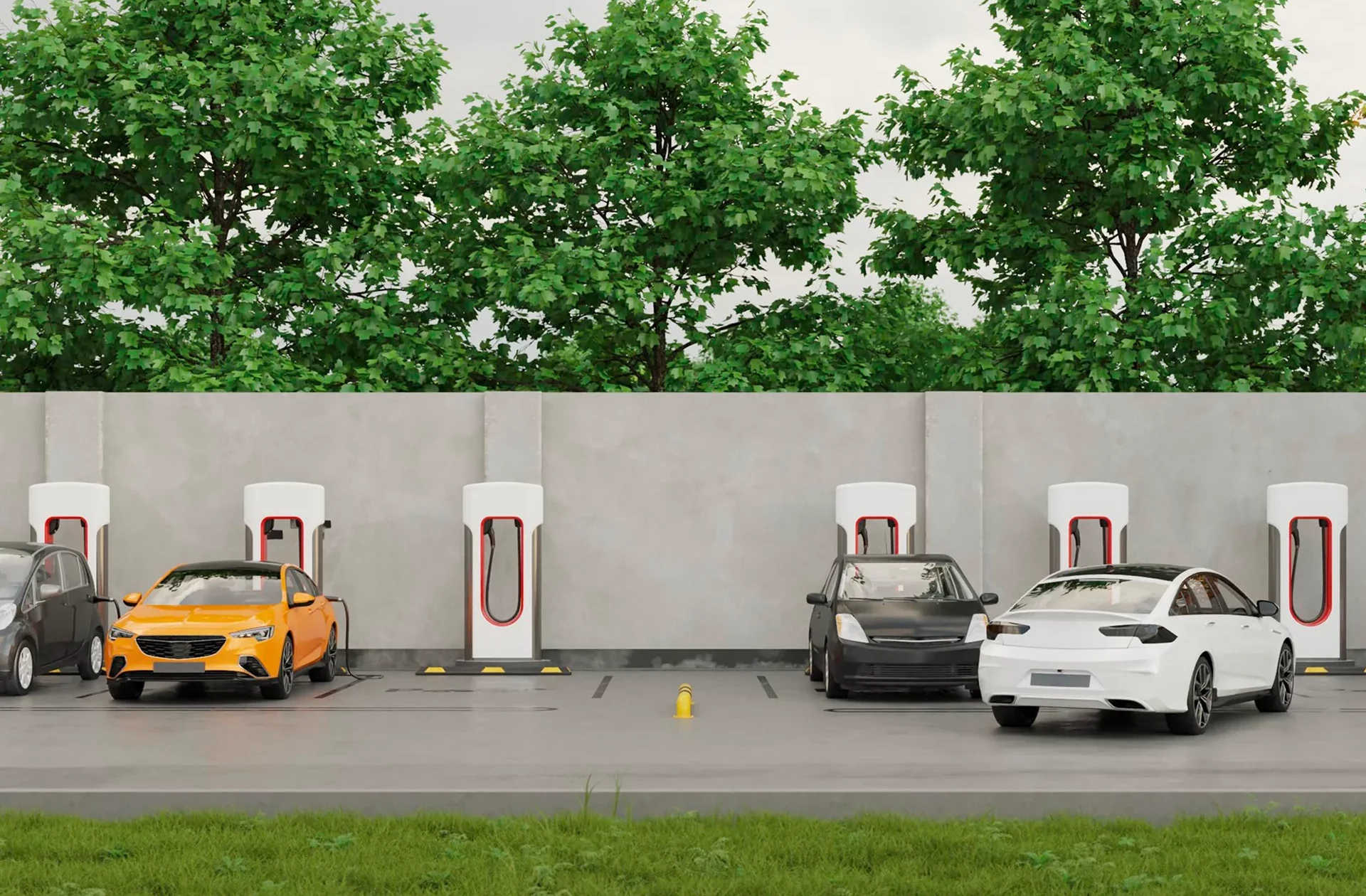
Making EVs Affordable and Appealing
One of the most decisive factors in Norway’s EV boom has been a comprehensive package of financial incentives and tax breaks that tilt the economics heavily in favor of electric driving. Norway began introducing pro-EV policies in the 1990s, long before mass-market electric cars existed, and steadily expanded this support over time[7]. Rather than outright banning petrol or diesel cars, Norway’s strategy was to “help consumers make the right decision” through incentives[7]. In practical terms, Norwegians have always been free to buy internal combustion engine (ICE) vehicles – they’ve just had to pay a premium to do so, while EV buyers got generous breaks.
The incentive program is often cited as a blueprint for success. It included the following measures (phased in over years)[8]:
Tax exemptions on car purchases:
New zero-emission vehicles (primarily BEVs) have been exempt from Norway’s hefty vehicle registration tax and import duties. These taxes can add thousands of pounds to the price of a petrol car, so waiving them made EVs much more price-competitive[9][10]. Importantly, EVs were also exempt from the 25% VAT that Norway ordinarily applies to car purchases[9]. This tax break (in effect until 2022) meant an immediate 25% discount on every new electric car relative to an equivalent fossil car’s price. Together, these fiscal incentives often brought the upfront cost of EVs below that of comparable ICE models in Norway.
Lower ownership and usage costs:
Beyond purchase price, EV owners enjoyed reduced costs in day-to-day use. Norway granted at least a 50% reduction in road taxes for EVs, and electricity for charging isn’t taxed like petrol or diesel fuel[8]. EV drivers also received discounts or exemptions on road tolls, ferry fees, and public parking charges – savings that add up substantially over a year[8]. Many Norwegian cities even offered free parking for EVs in municipal lots[10].
Perks and conveniences:
To sweeten the deal further, EVs were given access to certain non-monetary perks. Perhaps most famously, electric car drivers could use bus lanes during rush hour, zipping past traffic jams that trapped conventional cars[10]. These practical benefits made EV ownership convenient as well as cost-effective, reinforcing the sense that choosing an electric car was the smarter, easier choice for daily commuting.
Thanks to these measures, a Norwegian buying a new EV could save tens of thousands of kroner compared to buying a petrol car – both at the point of purchase and over the vehicle’s lifetime. It’s no surprise that demand shifted strongly toward EVs once they were consistently the cheaper option[8]. By 2021, about two-thirds of new cars sold in Norway were fully electric, a direct result of these incentives changing the cost calculus for consumers[8]. In fact, government projections showed that without incentives, Norway might only reach ~225,000 EVs on the road by 2030, but with incentives it could exceed 1.2 million – a difference of nearly a million extra EVs attributable to policy support[11]. These policies effectively “engineered” an EV market by making the economically rational choice an electric car.
It’s important to note that Norway could afford such generous incentives in part due to its unique economic situation. Paradoxically, the country’s wealth comes significantly from oil and gas revenues – but those profits have been channeled into a \$1.3 trillion sovereign wealth fund[12]. This cushion allowed Norway’s government to absorb the revenue loss from waiving car taxes and fuel taxes for EVs without gutting other programs[13]. In contrast, a country like the UK, which does not have a comparable wealth fund and faces tighter budgets, would find it difficult to eliminate VAT or fuel duties for EVs at the same scale[13]. Norway’s oil-funded coffers meant incentives could be sustained long enough for EV adoption to reach critical mass without derailing public finances.
Another often-overlooked factor is that Norway has no domestic auto manufacturing industry. This removed a potential political obstacle to aggressive EV policies. Nations like the UK, Germany, or the USA have powerful automotive industry lobbies and large workforces tied to traditional carmaking, which can resist policies that penalize petrol/diesel cars[14]. Norway, by contrast, didn’t have to worry about bankrupting a homegrown carmaker with its EV-first agenda. This freedom enabled Norway’s parliament to enact tough measures (like high taxes on ICE vehicles) with relatively little opposition[14]. In essence, Norway treated gas-guzzling cars as an import it wanted to wean itself off, and it faced no internal industry pushing back at the policy table.
Finally, policy consistency has been key. Norway’s commitment to electromobility has remained stable across different governments and decades, creating a predictable environment for consumers and businesses[15][16]. The Storting (Norwegian parliament) set a clear “100% EV by 2025” new car sales target back in 2016–2017, and this target acted “like a beacon” guiding policy ever since[17]. Crucially, successive governments kept the incentives in place until the EV market was mature – they did not abruptly pull the plug on subsidies at the first sign of success. This contrasts with the UK, where the plug-in car grant was discontinued in 2022 when EVs were only ~16% of new sales, arguably stunting further growth by removing support too early[18]. Norway waited to phase out perks until EVs dominated the market; indeed, some tax exemptions have only recently been scaled back, and those removals have done little to slow EV sales because consumers are now convinced on EV merits[19]. The lesson is clear: continuity and long-term commitment in policy are essential to build confidence for both car buyers and automakers[15][20].
Charging Infrastructure and Energy Advantages
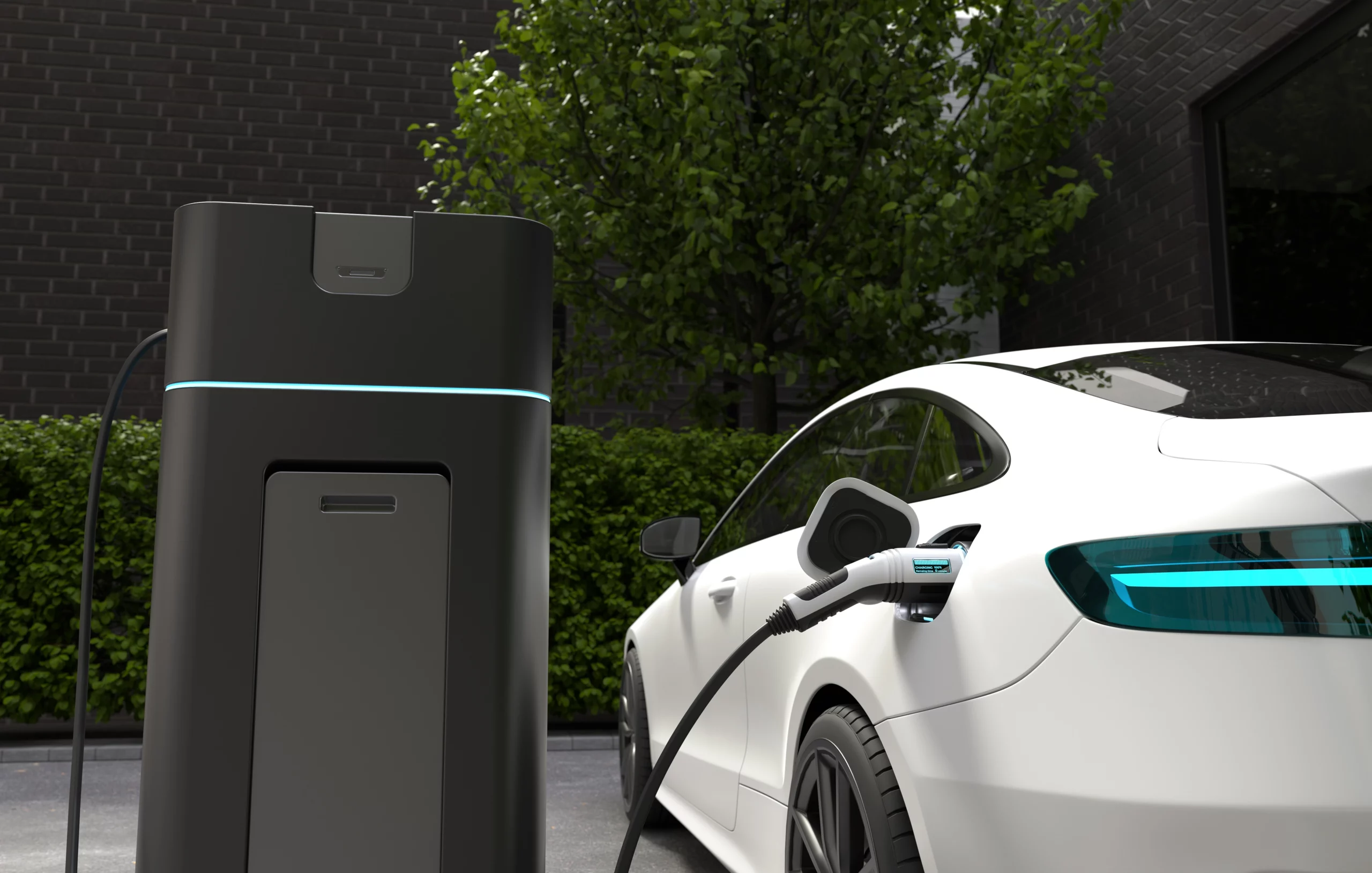
Policies alone might spur initial adoption, but without adequate charging infrastructure and energy support, EV growth can stall. Norway recognized early that a robust charging network was the backbone of mass EV uptake. Range anxiety – the fear of running out of charge – needed to be addressed head-on. As a result, Norway heavily invested (often with public funding) in deploying chargers across the country[21]. By 2020, even before the recent surge, Norway already had over 13,000 public charging points, including nearly 1,600 fast chargers along major routes[21]. This network has only grown since. By 2024, with so many EVs on the road, many traditional petrol stations in Norway have literally been converted into fast-charging stations, reflecting the declining demand for petrol and diesel[22].
Today, Norway boasts roughly 27,000 public fast charging points, an impressive figure for a small nation[23]. In terms of infrastructure per capita, that’s over 400 public chargers per 100,000 people – the highest such density in the world[24]. For comparison, the UK (with about 70,000 public chargers in 2024) has only about 89 chargers per 100,000 people[24]. This disparity means that an average driver in Norway is far less likely to be stranded without a charger nearby than a driver in the UK or most other countries. The extensive charging infrastructure woven into Norway’s cities and rural areas has made owning an EV genuinely convenient, even for long cross-country trips. Fast chargers line the highways through Norway’s fjords and mountains, and every small town is increasingly likely to have a charging spot at the local grocery or petrol station.
Another advantage for Norway is its electricity generation mix. Over 88% of Norway’s domestic electricity comes from hydropower (water turbines)[25], with most of the remainder from other renewables. This means that Norwegian EVs are effectively charged on 100% carbon-free, low-cost electricity. Not only does this maximize the environmental benefit of going electric (since each EV truly has near-zero emissions in use), but it also provides stable and relatively low electricity prices for consumers. Norwegian EV owners charge at home knowing their “fuel” is clean and cheap – quite the opposite of relying on imported oil whose price can spike. In the UK, by contrast, the grid is a mix of gas, renewables, and some nuclear; while it’s greening over time, a UK driver might be more concerned about electricity costs or the true emissions of an EV if the grid isn’t fully renewable. In the U.S., the situation varies by state, but many regions still have coal or gas-heavy electricity, making the transition less immediately beneficial for emissions. Norway’s abundance of renewable energy has thus been an unsung hero in its EV saga, ensuring that EV adoption aligns perfectly with national climate goals and that drivers feel they are making a genuinely green choice.
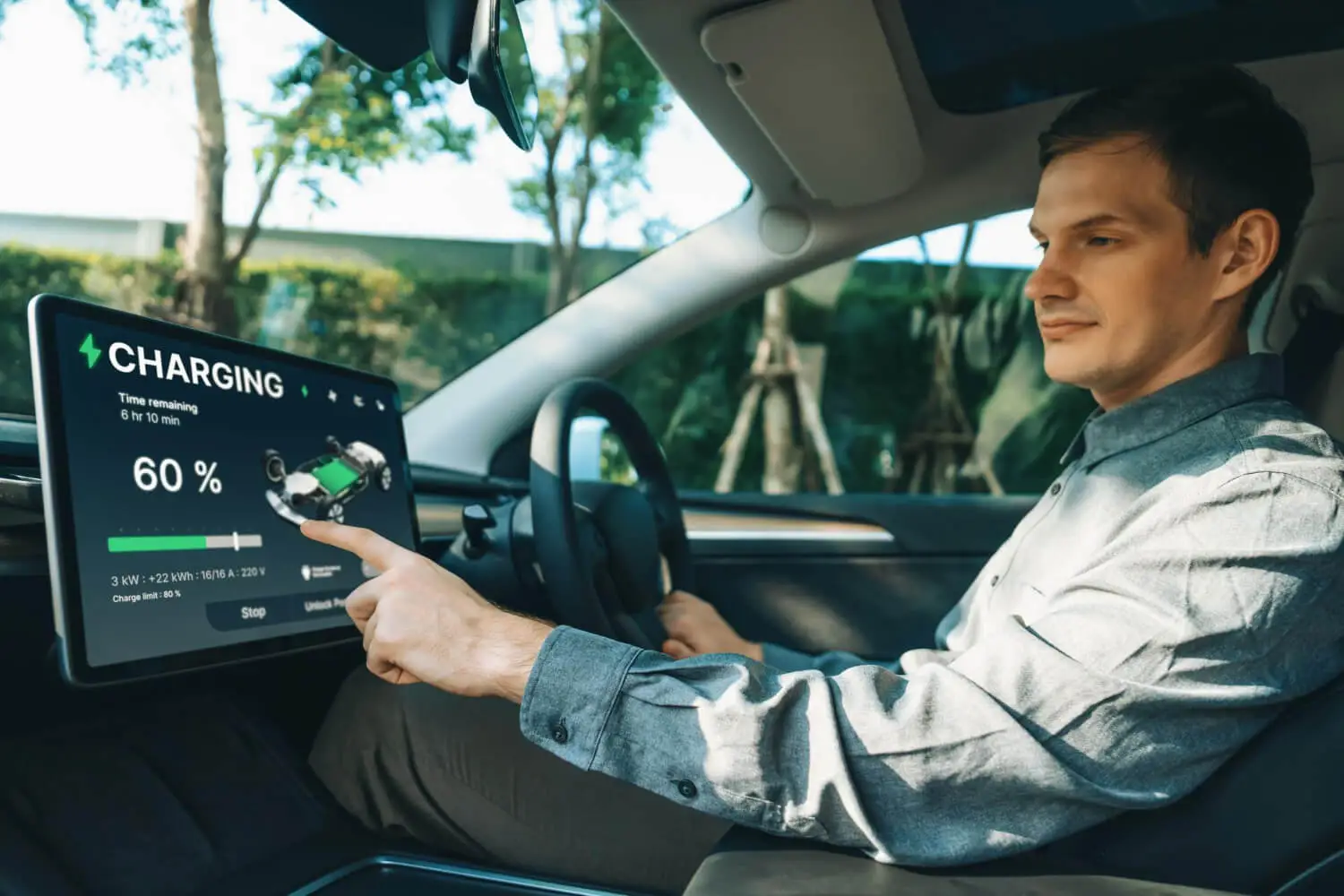
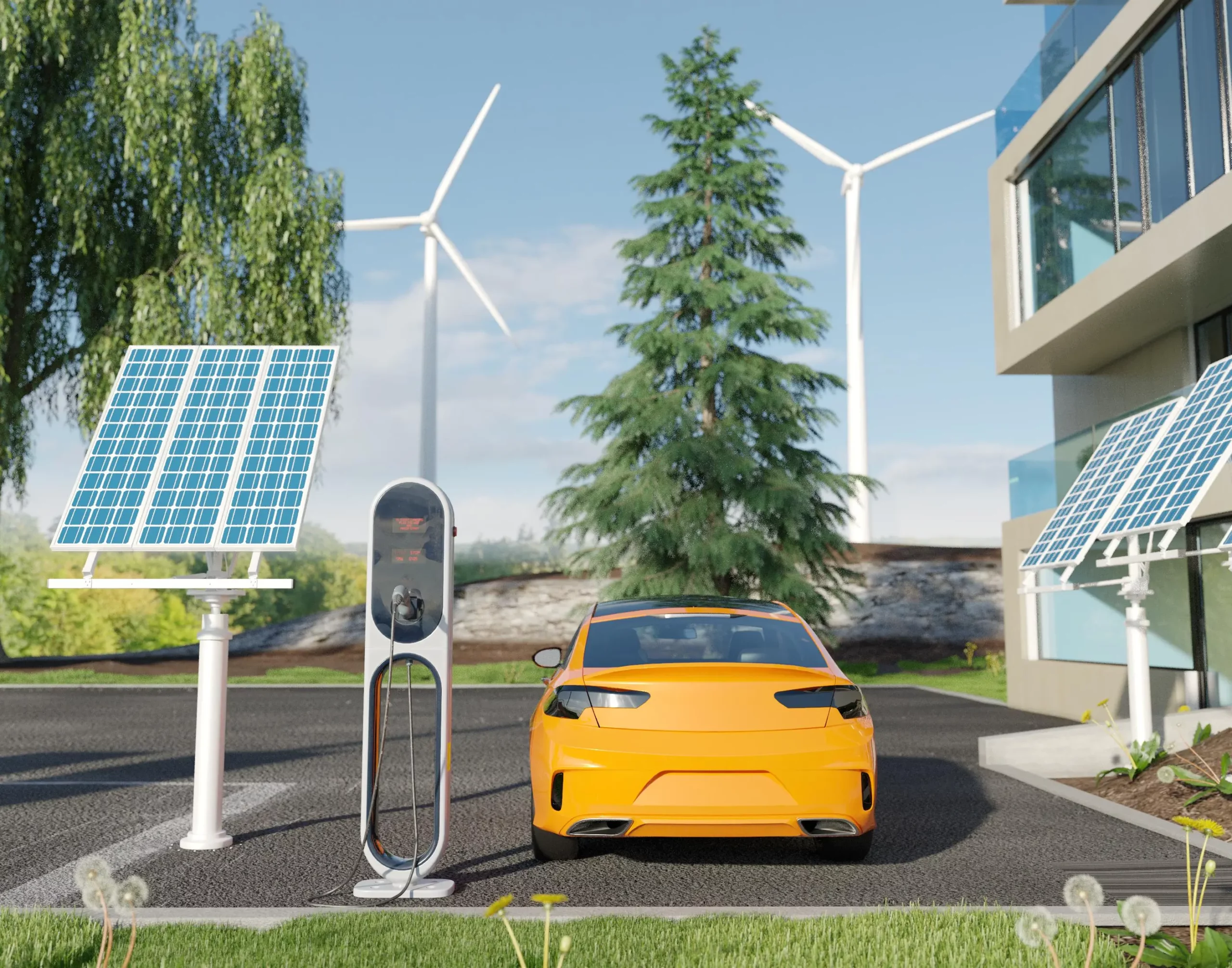
It’s worth noting that private companies and startups have also played a big role in Norway’s charging rollout, often in partnership with government initiatives. For example, Easee (a Norwegian EV charging company) and others have installed hundreds of thousands of home and commercial chargers across the country[26]. The government, through entities like Enova (a state enterprise), provided subsidies to seed charging stations in less profitable remote areas, ensuring even sparsely populated regions are covered[21]. This comprehensive approach – initial public investment attracting private sector growth – has led to a charging infrastructure that is both widespread and continuously improving. Other countries are now trying to replicate this: the UK, for instance, has earmarked £200 million for charging infrastructure in 2024–2025 and set a target of 300,000 public chargers by 2030[27][28]. But as of today, no country can yet match Norway’s charging network on a per-EV basis. By solving the infrastructure piece of the puzzle, Norway removed one of the last practical barriers to mass EV adoption.
A Case of Policy and Consistency
The United Kingdom often invites comparison to Norway due to certain similarities – both are wealthy Northern European countries with high vehicle ownership, and both have declared climate ambitions to phase out fossil-fuel cars. However, the EV uptake in the UK lags far behind Norway’s, and a closer look at their approaches helps explain why. As mentioned, only about 20% of new car registrations in the UK were electric in 2024, which is a respectable increase from previous years but still “miles behind Norway”[2]. In fact, Norway hit 20% new EV sales all the way back in 2017, so the UK is roughly 6–8 years behind on the EV adoption curve.
Several factors contribute to this gap:
Financial incentives and taxation:
The UK did implement incentives like the Plug-in Car Grant (PiCG), which from 2011 offered subsidies (up to £5,000, later £2,500) off the price of a new EV. However, the PiCG was withdrawn in 2022 when EVs were only ~16% of new sales, a much earlier cutoff than Norway’s approach[18]. By pulling back purchase subsidies at a relatively low market share, the UK slowed its EV momentum. Furthermore, the UK never waived its 20% VAT on EV purchases (buyers had to pay full VAT), and while there have been no registration taxes specifically for emitting cars (as Norway has), the UK’s tax differential was not as extreme. The result is that buying an EV in Britain has remained more expensive relative to an equivalent ICE car than it would be in Norway. The UK did offer other incentives – e.g. zero road tax (Vehicle Excise Duty) for EVs and generous company car tax benefits – but these haven’t matched the upfront, across-the-board price advantage seen in Norway[13]. Additionally, as of late 2023, the UK government decided to start charging road tax on EVs from 2025, which some worry could further dampen EV affordability. In short, Norway’s fiscal incentives were larger and lasted longer than the UK’s, and the impact on adoption reflects that difference.
Political consistency and targets:
Norway’s EV policy survived multiple election cycles without reversal, whereas the UK’s approach has seen shifts and U-turns that create uncertainty[16]. A prime example is the target date for banning new petrol and diesel car sales. The UK originally announced a 2030 ban, then in 2023 the government pushed it back to 2035, then later signaled it might move it forward again – these conflicting signals have confused both consumers and the car industry[29]. By contrast, Norway’s de facto 2025 target (while not a formal “ban”) was kept steady, and policies were aligned toward it consistently[15][17]. Industry experts note that this lack of long-term clarity in the UK has likely “destabilised investment” in EV-related projects[30]. Car manufacturers and charging providers are less willing to invest aggressively if they aren’t sure the government will stick to its EV ambitions. Inetic Traction and other industry voices advocate for the UK to introduce more stable, ambitious mandates (such as the Zero Emission Vehicle credit mandate planned for 2024-2025) to give a clear trajectory for the next decade[31].
Economic constraints:
The UK’s economy, while large, does not have the same freedom to subsidize as Norway’s. The UK government faces budget deficits and many competing spending priorities, from healthcare to social services, which limits how much it can pour into EV incentives[13]. The Treasury has been wary of losing fuel tax revenue and car tax revenue at the scale Norway did. British policymakers also have to consider the domestic auto sector (Jaguar Land Rover, Nissan’s Sunderland plant, etc.) and jobs when crafting regulations – a sudden aggressive EV push might risk those factories if not managed carefully. Norway’s policymaking was comparatively free of those economic handcuffs, thanks to its sovereign wealth fund and lack of auto-manufacturing lobby[14][12]. In practical terms, Norway could sustain a generous EV incentive scheme for 30 years; the UK tapered theirs after about 10 years.
Infrastructure rollout:
As discussed earlier, charging infrastructure in the UK, though improving, trails Norway’s in density. The UK actually has a higher absolute number of public chargers than Norway (over 70,000 as of 2024[24]), but with a population 12 times larger, that translates to far fewer chargers per capita. Rural charging in parts of the UK (especially Northern Ireland and some remote areas) remains sparse, whereas Norway’s policy of funding chargers even in remote fjord communities ensured more uniform coverage[32]. The UK’s strategy is now to accelerate charger deployment (with targets like 300k chargers by 2030 and funding to back it[27]), learning from Norway’s example that infrastructure should lead adoption. In Norway, the joke is you’re never far from a fjord or a charging station – a level of convenience the UK hopes to achieve in coming years.
Despite these differences, it’s not all bad news for the UK. In fact, the UK is currently Europe’s second-largest EV market by volume and is “rapidly closing the gap to Germany” (Europe’s largest car market) in annual EV sales[33]. Approximately one in three new cars sold in the UK in 2024 was electrified (including hybrids), and pure BEVs reached roughly 20% of new sales[34]. This is a major leap from just a few years ago. The UK has also committed to ending the sale of new petrol/diesel cars by 2035 (with hybrids allowed until then), putting it on a timeline only slightly behind the most ambitious countries. The key lesson from Norway for the UK is one of consistency and support: maintaining strong incentives and clear targets for a longer period might have driven an even faster uptake[20]. As the UK moves forward, policies like the incoming ZEV mandate (which will require carmakers to sell an increasing percentage of zero-emission cars each year) are steps in the right direction[30]. The British EV market’s trajectory is upward, but Norway’s head start means it will take extraordinary effort – and perhaps some Norwegian-style bold policies – for the UK to catch up.
Following in Norway’s Footsteps?
When viewed against Norway’s near-saturation of EVs, the rest of Europe – and especially the United States – still have a long road ahead. Europe as a whole had roughly a 20% electric share of new cars in 2024, maintaining the previous year’s progress[3]. This European average includes leaders and laggards: countries like Sweden, the Netherlands, and Denmark have strong EV uptake (Sweden and Denmark are approaching 30-40% new EV sales), while larger markets like Germany and France saw a plateau or slight dip in 2024 after subsidy cuts[3]. Europe’s policy landscape is evolving; for instance, Germany ended its EV purchase subsidies in late 2023, which caused a short-term drop in EV sales growth[35]. Similarly, France has scaled back its incentives and added income-based eligibility for bonuses[35]. These shifts show that even in fairly pro-EV Europe, sustaining the growth rate seen in Norway can be challenging once incentives are reduced. By contrast, Norway’s government is only now introducing some taxes on high-end EVs and plug-in hybrids (from 2023–2025 onward) after reaching an overwhelming EV market share[36]. Other European countries are studying Norway’s eventual transition away from incentives, hoping to learn when and how to safely withdraw subsidies without derailing progress.
Across the Atlantic, the United States’ EV adoption lags behind Europe’s. In 2024, only about 8–9% of new cars sold in the U.S. were electric[2] – some estimates put pure EVs at roughly 6% of new sales, if plug-in hybrids are excluded[37]. The reasons for America’s slower uptake are multifaceted. Historically, fuel prices in the U.S. have been low (due to low fuel taxes), so the savings from switching to an EV were less dramatic for consumers than in high-fuel-cost countries like Norway or the UK. Until recently, federal incentives in the U.S. were also less far-reaching – a \$7,500 tax credit was available, but it had limits on manufacturer sales and many consumers found it confusing or inapplicable. It wasn’t until the 2022 Inflation Reduction Act that the U.S. revamped its EV incentives and infrastructure funding in a major way, aiming to boost domestic EV production and adoption. The U.S. also lacks a nationwide carbon tax or high vehicle taxes that could spur EVs; much of the policy action happens at the state level. California and a handful of other states have been the Norway-like pioneers in America, with California mandating a rising ZEV sales share (similar to the UK’s planned mandate) and aiming to ban new petrol car sales by 2035. This has led to California reaching upward of 20% EV sales in 2023-24, on par with Europe’s average. However, other states are far behind, and some have even rolled back EV support (for example, by adding fees on EV registrations to recoup lost fuel tax revenue).
Another factor is model availability and consumer preference. American buyers have historically favored larger vehicles (trucks and SUVs), and until recently there were fewer EV options in those segments. That’s changing – with electric pickup trucks and SUVs hitting the market – but Norway’s EV surge was aided by the fact that many popular models (Tesla, Nissan Leaf, VW ID.4, etc.) fit the needs of Norwegian consumers early on. Europe’s car market is closer in style to Norway’s, whereas the U.S. is only now getting a broader range of EV models that appeal to its market (such as Ford F-150 Lightning trucks or Rivian SUVs).
From a policy consistency standpoint, the U.S. has seen swings depending on the administration. The 2010s had federal support for EVs which then stalled in the late 2010s, and is now ramping up again in the 2020s. This is somewhat analogous to the UK’s situation of policy whiplash, but on a bigger scale. The result was a critical lost period where infrastructure and consumer education lagged. As of 2025, however, the U.S. is making up for lost time with unprecedented investments in charging infrastructure (a national network of fast chargers is being funded along highways) and strong incentives for American-made EVs and batteries. The hope is to accelerate EV uptake beyond the modest 6-9% share and catch up to the likes of Europe and China.
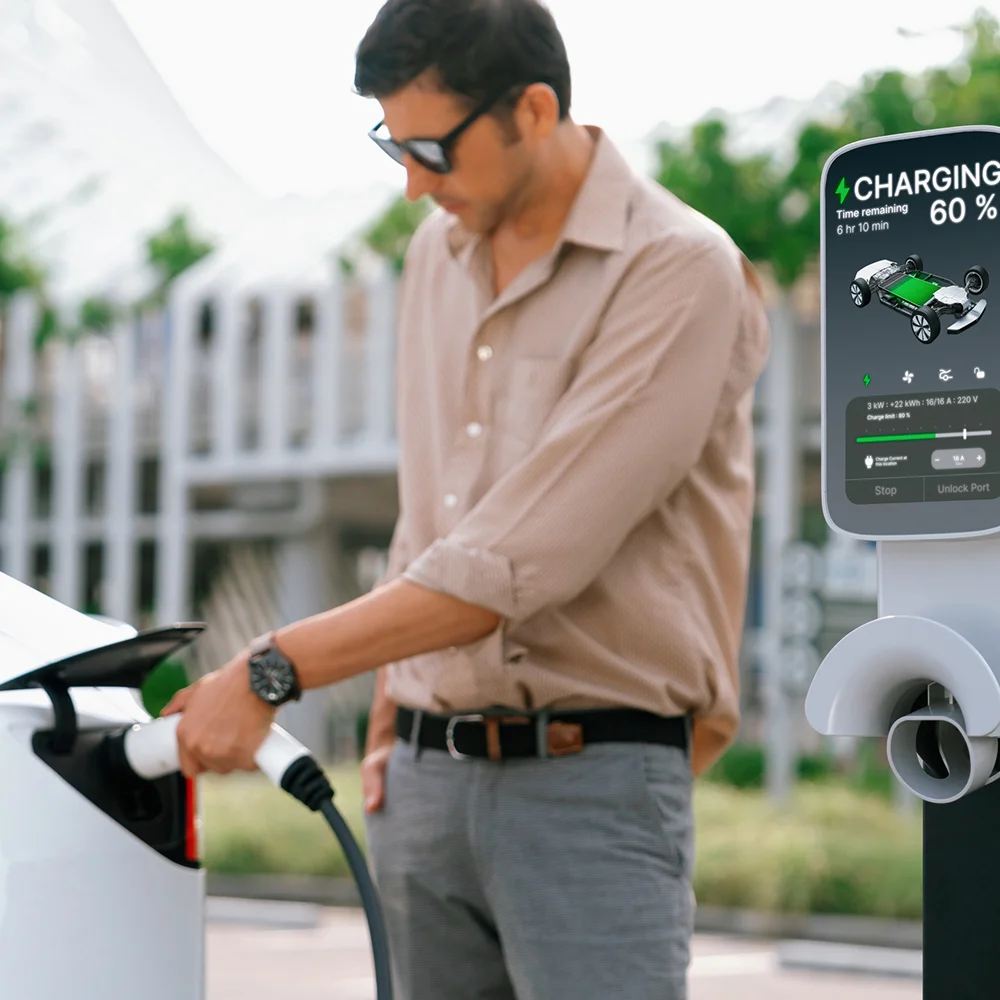
In broader Europe, many countries are now looking to Norway as a case study in how to effectively drive EV adoption. The Nordic countries especially have followed Norway’s lead – for example, Iceland and Sweden now rank just behind Norway in EV market share (Iceland was over 40% electric in new sales by 2022, and Sweden around 30% and rising)[38]. These countries likewise employed generous incentives and have high environmental awareness. Other European nations are intensifying efforts too: the EU has set an effective phase-out of new combustion car sales by 2035, which is a blanket policy somewhat inspired by Norway’s success (though Norway is not in the EU). The result is that we expect Europe’s EV share to keep climbing in the coming years, though perhaps not at Norway’s lightning pace.
What clearly emerges from the global picture is that Norway’s high EV market share stands in sharp contrast to the 10–20% range typical elsewhere[37]. Experts point out a few key barriers that continue to slow EV uptake outside of Norway[37]:
Higher upfront costs:
In many markets, EVs still cost more to buy than comparable ICE vehicles (before incentives). Norway eliminated that gap with incentives. Other countries are narrowing it as battery prices fall, but sticker price anxiety remains a factor for consumers. On the bright side, a recent analysis noted that in some regions, used ICE cars are now on average a few thousand dollars more expensive than used EVs of similar age, meaning cost-of-entry is improving for EVs on the secondhand market[39].
Charging infrastructure gaps:
Outside of Norway (and a few other leaders), charging networks are playing catch-up. Many potential EV buyers in the US or UK cite lack of convenient local charging as a concern[40]. Building sufficient charging infrastructure – especially fast chargers for long trips and sufficient home/work charging in cities – is an ongoing challenge. Countries are investing heavily now, but Norway’s comprehensive early build-out gives it a continued edge.
Consumer education and confidence:
Misconceptions about EVs (range, battery life, reliability) persist in some places[41]. Norway’s high EV visibility helps dispel these myths – when your neighbors and taxi drivers all have EVs that work fine through winter, you’re less skeptical about the tech. In markets where EVs are still rare, people may be more hesitant to be “first adopters.” Governments and automakers elsewhere are increasingly engaging in public education campaigns, but Norway’s organic word-of-mouth among a populace that actually drives EVs daily is hard to replicate.
In summary, while Europe and the U.S. are making significant strides toward electrification, Norway remains years ahead in execution. Countries like the UK and US are now implementing policies that Norway pioneered years ago – from EV purchase incentives and charger rollouts to combustion vehicle phase-out targets – which gives hope that the adoption curve in these places will steepen. Indeed, global EV sales are rising fast (over 17 million sold in 2024, about 22% of all new cars worldwide[42][43]), driven largely by policy and technology trends that mirror Norway’s early moves. Norway, in effect, has been the real-world experiment that proved EVs can fully replace conventional cars, and now others are taking that lesson to heart.
Lessons from Norway’s EV Revolution
Norway’s successful EV uptake is not a product of any single magic bullet, but rather a systemic alignment of factors. Generous incentives made electric cars the financially smart choice, robust infrastructure made them the convenient choice, clean energy made them the green choice, and consistent policies made them the secure future choice. By addressing economic, practical, and perceptual barriers all at once, Norway created a virtuous cycle: as more people bought EVs, they demonstrated their viability to others, which in turn built public support for continuing pro-EV policies. It’s a case study in how to engineer an societal transformation toward sustainability.
For other countries seeking to replicate Norway’s success, a few clear lessons emerge. Long-term policy commitment is paramount – stop-go policies or half-measures will not send a strong enough market signal. Consumers and industries respond to certainty and ambition, as seen in Norway[15][20]. Additionally, incentives work: when EVs are made affordable and convenient, people do buy them, even in unlikely places. However, those incentives likely need to be maintained until a self-sustaining market share is reached (on the order of 50%+ of new sales)[18]. Cutting support too early can stall the progress. Moreover, infrastructure should be planned proactively – Norway’s experience shows that having visible chargers everywhere greatly reduces consumer anxiety. Finally, countries must tailor these strategies to their own context – not every nation has Norway’s oil wealth or hydropower, but all can prioritize funding for chargers and offer tax breaks in clever ways (for example, many European states now give EV rebates funded by higher taxes on high-emission cars).
As the world accelerates toward an electric future, Norway offers both inspiration and a roadmap. It demonstrates that an all-EV society is not only possible, but beneficial – cleaner air in cities, lower carbon emissions, and even reduced oil consumption at the national level have been achieved[5]. Of course, Norway is still working on challenges, such as integrating heavy vehicles (trucks, ships, etc.) into the electric transition and eventually dealing with the loss of fuel-tax revenue. But having achieved near 100% electric new car sales, it is years ahead in figuring out these next steps.
In conclusion, Norway’s EV uptake success is a testament to what can happen when government, industry, and consumers move in unison towards a clear goal. Other countries, from the UK to the US and beyond, are now striving to adapt these lessons to their own roads. For EV technology companies like iNetic and the wider industry, Norway’s story is encouraging: it shows that with the right mix of technology and policy, the electric revolution can indeed be engineered. The road to an electric future may be long for some, but Norway has illuminated the path forward – and it’s paved with charging stations.
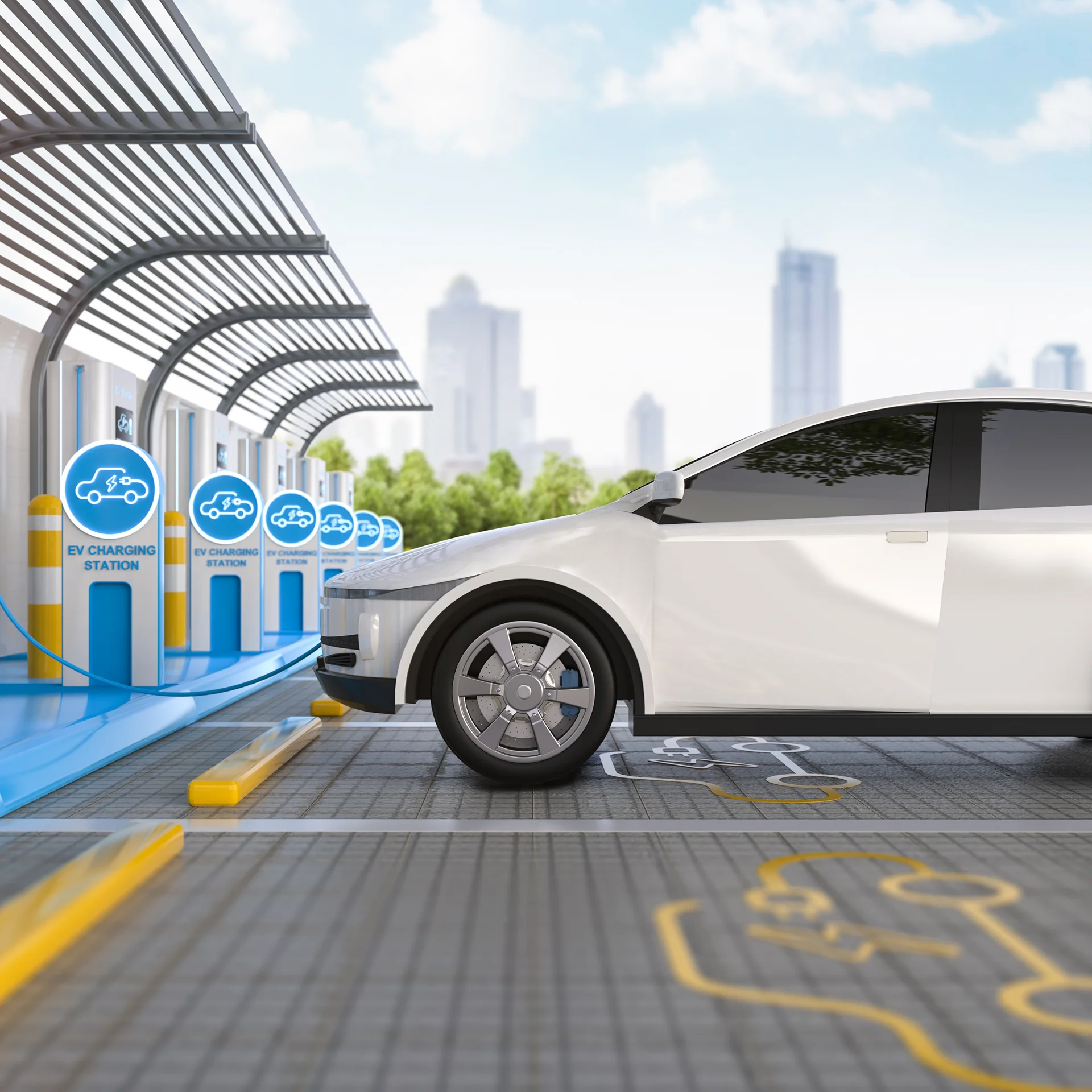
References:
- Norwegian Road Federation – Norway new car sales data, 2023-2024[1]
- OECD – Case Study: Norway’s incentives for zero-emission vehicles[8][11]
- Gridserve News – Why Norway leads the world in EV adoption, Joe Finnerty (Feb 2025)[10][44][2][13][45][20]
- EV Magazine – Norway’s EV Dominance: A Roadmap for Global Success, Stella Nolan (Mar 2025)[46][37]
- IEA – Global EV Outlook 2025, International Energy Agency (2025)[3][5]
- [1] [2] [4] [6] [7] [10] [12] [13] [14] [16] [18] [19] [20] [22] [23] [24] [25] [27] [28] [30] [31] [33] [44] [45] Why Norway leads the world in electric vehicle adoption
- https://www.gridserve.com/why-norway-leads-the-world-in-ev-adoption/
- [3] [5] [34] [35] [36] [42] Trends in electric car markets – Global EV Outlook 2025 – Analysis – IEA
- https://www.iea.org/reports/global-ev-outlook-2025/trends-in-electric-car-markets-2
- [8] [11] [21] Norway’s evolving incentives for zero-emission vehicles | OECD
- https://www.oecd.org/en/publications/2021/09/ipac-policies-in-practice_1a65968e/norway-s-evolving-incentives-for-zero-emission-vehicles_c74c1e9d.html
- [9] [15] [17] [26] [29] [32] [37] [39] [40] [41] [46] Norway’s EV Dominance: A Roadmap for Global Success | EV Magazine
- https://evmagazine.com/news/norways-ev-dominance-a-roadmap-for-global-success
- [38] These Countries Are Adopting Electric Vehicles the Fastest
- https://www.wri.org/insights/countries-adopting-electric-vehicles-fastest
- [43] Tracking global data on electric vehicles – Our World in Data
- https://ourworldindata.org/electric-car-sales